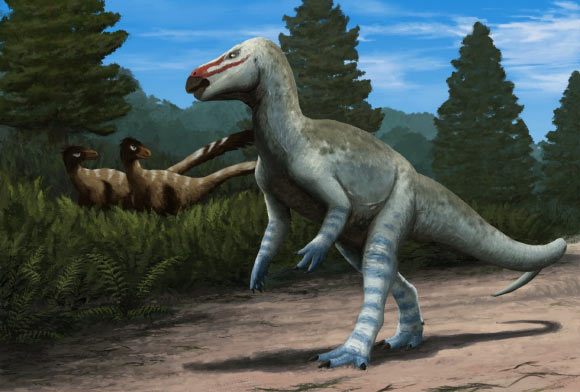Named Obelignathus septimanicus, the new species inhabited the European Archipelago around 72 million years ago (Cretaceous period) and belonged to a family of iguanodontian ornithopod dinosaurs called Rhabdodontidae.

Rhabdodontid dinosaurs were small- to medium-sized, probably habitually bipedal herbivores between 2 and 6 m (6.6-20 feet) in length.
These dinosaurs were characterized by a rather stocky build, with strong hind limbs, short forelimbs, a long tail and a comparatively large, triangular skull that tapers anteriorly and ends in a pointy snout.
They inhabited the Late Cretaceous European Archipelago, an extensive archipelago with numerous small and large islands situated in a shallow tropical sea.
Currently, the family comprises less than ten species, which have been found in southern France, northern Spain, eastern Austria, western Hungary and western Romania.
“Rhabdodontids are commonly considered to represent a group of small to medium-sized ornithischian dinosaurs endemic for the Late Cretaceous European Archipelago,” said Dr. Łukasz Czepiński and Dr. Daniel Madzia, both from the Institute of Paleobiology at the Polish Academy of Sciences.
“Eight to nine distinct species are currently recognized based on specimens unearthed from eastern Austria, southern France, western Hungary, western Romania, and northern Spain.”
“Still, the understanding of the diversity of Rhabdodontidae and their intrarelationships remains far from complete.”
The fossilized remains of Obelignathus septimanicus — a right dentary — were found in the ‘Grès à Reptiles’ Formation in southern France.
The specimen was previously assigned to a species named ‘Rhabdodon’ septimanicus.
“Rhabdodon septimanicus is a poorly known species from the Upper Campanian to Lower Maastrichtian of southern France,” the paleontologists said.
“It was established based on a particularly robust dentary bone that has been subjected to conflicting taxonomic…
Read the full article here
